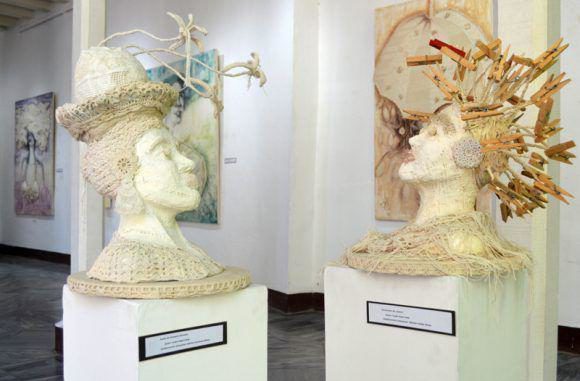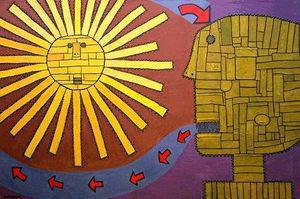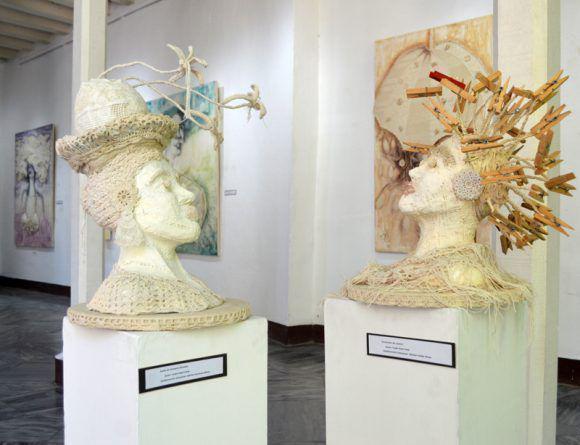Luces y Sombras: Preserving visual arts heritage

According to Havana City Historian, Dr. Eusebio Leal, the documentaries of the Luces y Sombras (Lights and Shadows) project are “the result of the will to preserve heritage in all fields.”
This year, in which the Cuban capital proudly celebrates its half millennium, the City Historian’s Office’s audiovisual production company decided to gather 20 films that make up the first stage of Luces y Sombras, a project born in 2013, into a Special Collection.
The initial and ongoing purpose of this project has been to show the work of outstanding contemporary Cuban visual artists, who have maintained a close relationship with the Historian’s Office, and a link with the World Heritage Site of the historic center of Havana, be it through workshops in that privileged space, or exhibitions in its different galleries.
Renowned artist and curator Lesbia Vent Dumois argues in a presentation note for the collection, a scoop for our publication: “Presented are twenty documentaries that cover several periods of the artistic production of renowned creators, of several generations, carefully selected according to strict curatorial criteria, where the promotional approach has not overlooked the educative intention that this project attaches to the materials.”
The first Luces y Sombras documentary devoted its 27 minutes to maestro Alfredo Sosabravo, 1997 National Visual Arts Prize winner. Those which came next were dedicated, among others, to: Eduardo Roca (Choco), Manuel López Oliva, Alicia Leal, Ángel Ramírez, Carlos Guzmán, Mario García Portela, Arturo Montoto, Flora Fong, Carmen Fiol, Moisés Finalé, Diana Balboa, Andy Rivero, Eduardo Abela, Eduardo Guerra, Isavel Gimeno, Jorge García, and Yudit Vidal. It has already been announced that number 20 features Martha Jiménez, a renowned artist based in Camaguey province.
Luces y Sombras was born from the radio program of the same name, aired weekly since the founding of Habana Radio 20 years ago, directed, written and hosted by journalist Estrella Díaz, with whom we talked in the courtyard of the Museum of Fine Arts’s Cuban Art Building, on the occasion of the premiere of the documentary on Yudit Vidal.
A special project for Havana’s 500th anniversary?
The La Ceiba record label, of the Historian’s Office, will release in November, when the 500 years of Havana are celebrated, the first edition of a Collection that will be called Luces y Sombras, like the radio program.
How were the artists selected?
For this project, two things have prevailed: quality and a close relationship with the Historian’s Office. Eusebio Leal has provided a refuge to many visual artists in the historic center of the city, and he wanted to preserve that memory, the life and work of a group of artists who have worked directly with the Office.
They are documentaries with the aim to preserve, but they are also didactic…
I think so. One of the most important things in this project is that they are very didactic documentaries, without formal experimentation, without pretentious language. They are not for specialists, but to show the work of artists with as many images as possible. Above all, they attempt to let people know the artist behind the work, because often the public knows the work, but not how the artist expresses him/herself.
***
The structure of the documentaries is simple, which does not mean light. It is based on an interview with the artist and includes testimonies from other creators, curators and researchers who consider their work, all narrated in the first person. Another relevant aspect is the presentation of a large part of the artist’s work in moving images and photographs.
Number 19 of the Luces y Sombras series, which premiered in the National Museum of Fine Arts’ theater, is dedicated to the artist Yudit Vidal, from Trinidad. The production team was made up of Magda Resik (general direction), Estrella Díaz (script and direction), Chris Erland (editing and photography) and Yanely Hernández (production), and the original opening and closing music by Ángel Quintero and Tomás Rivero.
This documentary contains, like all the rest, an interview with the artist, and art curator and critic Nelson Herrera Ysla’s views on her work, as well as those of Víctor Echenagusía, expert at the Trinidad Conservation Office; specialist Carlos Enrique Sotolongo, of Trinidad’s Romance Museum; and writer and essayist Luis Toledo Sande.
The film offers an approach to the life and work of the painter and draftswoman and her recurring themes, including the World Heritage Site, Villa de la Santisima Trinidad, with its ghosts, its tiled roofs, its grilles.
Thanks to the number of works presented, we can appreciate the colorful palette and confident lines of the artist, and how Vidal incorporates volume.
This is the case of the series Entre hilos, alas y pincel (Among threads, wings and brushstrokes), a project undertaken alongside Trinidadian artisans to mark the 500th anniversary of that town. The artist’s combination of handicrafts and textiles, on the one hand, and painting and drawing, on the other, is not surprising, as linen and embroidery is a distinctive tradition of Trinidad, still alive today. This is a symbiosis that Vidal achieves with mastery, subtlety, and extraordinary skill.
In the abovementioned note for the Collection of twenty documentaries from the Luces y Sombras series, Lesbia Vent Dumois states: “This compilation will offer us the opportunity to reflect on affinities, differences, and above all we will enjoy appreciating the richness, variety and aesthetic values of the proposals, in an unlimited space where several genres are mixed, emphasizing the content of the message, the craft, the metaphors, movements that mark the keys to current art, and in which artists offer viewers their own words and their own image.
“Each documentary allows us to meet artists with different attitudes and thoughts regarding artistic production, and where humor and satire, the critical and the questioning, have marked our panorama, which begins to be debated among the national and the universal.”
We must thank the producers of Luces y Sombras for this Special Collection, especially its creator, the journalist and now screenwriter and documentary director, Estrella Díaz. A gift to Havana on its half millennium.



Leave a Reply